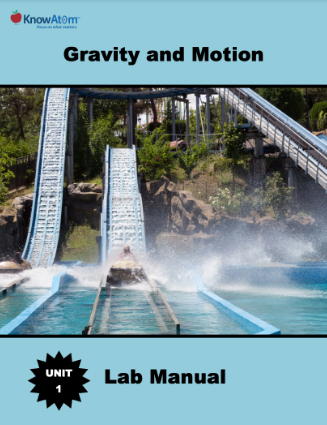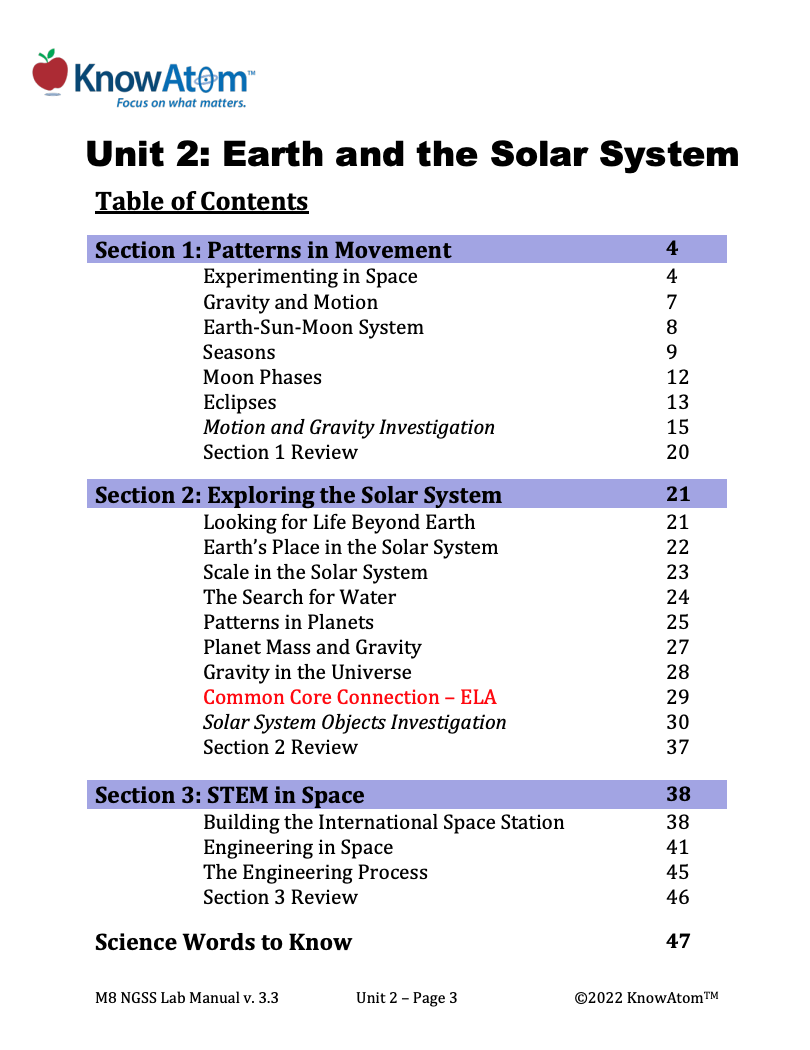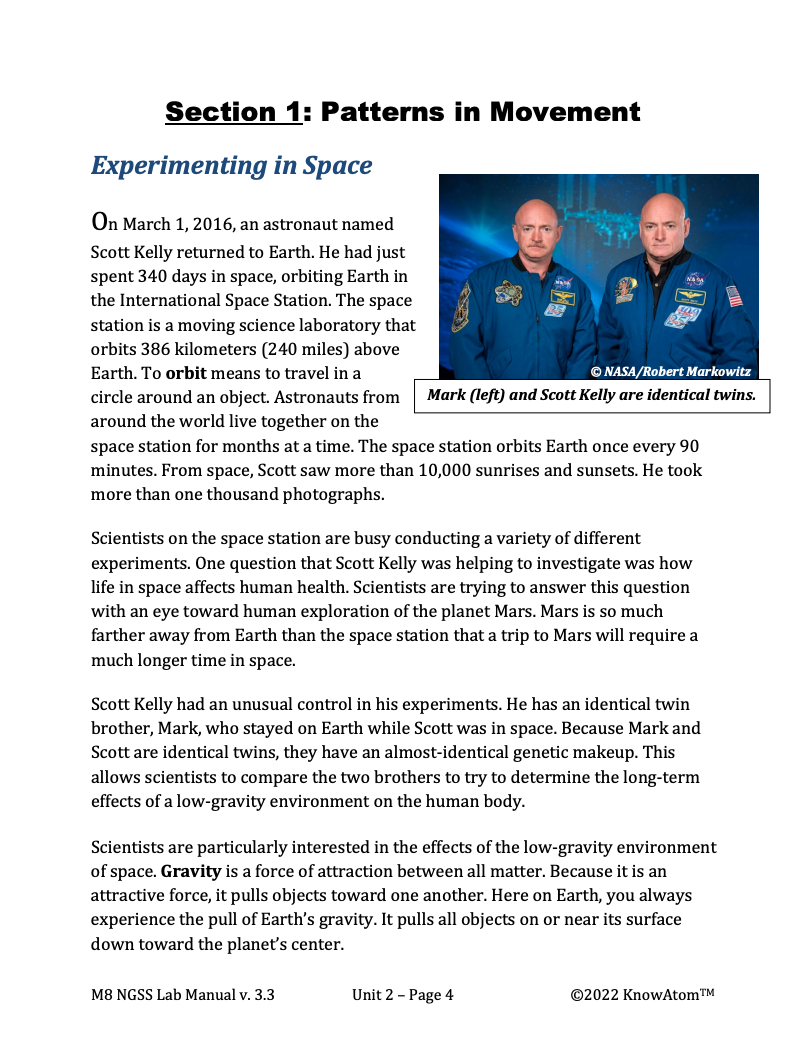
In this unit, students focus on the science phenomena of the relationship between gravity and motion, tracing how gravitational potential energy transforms to kinetic energy in different energy systems. In this lesson, they investigate the relationship between the drop height of a bouncy ball and its rebound height. This page is a high-level extract of this lesson.

In this unit, students explore the vastness and mysteriousness of the universe, exploring how the Earth-sun-moon system fits into solar system phenomena and the Milky Way Galaxy. In this lesson they evaluate phenomena related to gravity’s role in forming the solar system and how mass and gravity determine weight on other planets. This page showcases key elements in this lesson.

In this unit, students apply what they have previously learned about forces, motion, and matter to the solar system, focusing on the phenomena of gravity’s role in the universe. In this lesson, students engineer a solution to collisions between moving objects in space. This page is a high-level extract of this lesson.
.png)
In this unit, students focus on the phenomena of rocky shore ecosystems and the science phenomena of how organisms interact. For this lesson, students analyze how adaptations allow for the survival of different organisms, specifically sea star structures. This is a high-level extract of this lesson.
.png)
In this unit, students explore the interconnectedness of the living and nonliving parts of an ecosystem phenomena. In this lesson, they design an experiment to test how heat is transferred in different materials found on the rocky shore. This page provides a brief overview of this lesson.
.png)
In this unit, students explore phenomena related to the relationship between forces and motion and how energy is converted from one form to another in an energy system. This page is a high-level extract of the first lesson from this unit which has students investigating the connection between an object’s mass and the force needed to change its motion.
.png)
In this unit, students explore how communication systems transmit information from one person or place to another. In this lesson, students use what they know about the science phenomena of electromagnets and magnetic fields to design a speaker, a common decoding device in many audio technologies. This page highlights key components of this lesson.
Standards citation: NGSS Lead States. 2013. Next Generation Science Standards: For States, By States. Washington, DC: The National Academies Press. Neither WestEd nor the lead states and partners that developed the Next Generation Science Standards were involved in the production of this product, and do not endorse it.
